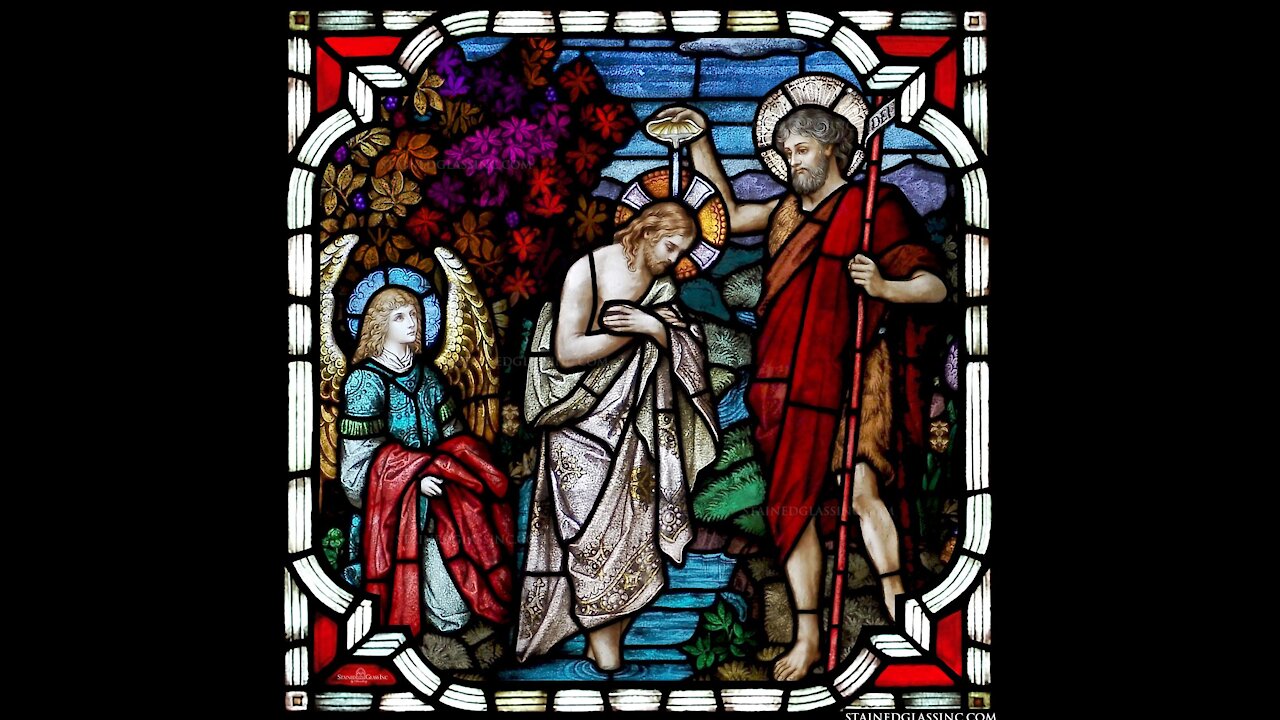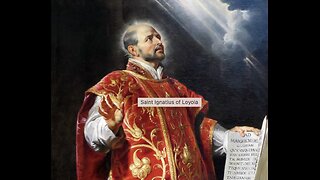Premium Only Content

A New Man- Set the Captives Free V
Older pieties ember days , rogation days, etc…
Ember Days are days of fasting and abstinence and fall annually after “Lucy, Ashes, Dove, and Cross“:
• December 13 (St. Lucia, V.M.)
• Ash Wednesday
• Whitsunday (Pentecost)
• September 14 (Exaltation of the Holy Cross)
From Blessed be God: A Complete Catholic Prayer Book (pp.234-5):
“Wednesday, Friday and Saturday were days of particular devotion in the early Church: Wednesday as recalling the betrayal of our Lord, and Friday in memory of His Passion, Saturday was later added to these days of prayer and penance as a continuation of Friday, and as far back as the second century they were set apart as Stational days, that is, as days of special religious service and fasting.”
Rogation days like ember says are tied to seasonal changes and an ask (rogare) to God for good crops and blessings over the people> They were marked by Litany of the Saints, a procession and Holy Mass.
VII. Ash Wednesday beginning of Lent Feb 17, 2021
VIII Candlemas = Purification of the Blessed Mother and Presentation of the Christ Child in the Temple
According to the Mosaic law a mother who had given birth to a man-child was considered unclean for seven days; moreover she was to remain three and thirty days "in the blood of her purification"; for a maid-child the time which excluded the mother from sanctuary was even doubled. When the time (forty or eighty days) was over the mother was to "bring to the temple a lamb for a holocaust and a young pigeon or turtle dove for sin"; if she was not able to offer a lamb, she was to take two turtle doves or two pigeons; the priest prayed for her and so she was cleansed. (Leviticus 12:2-8)
Forty days after the birth of Christ Mary complied with this precept of the law, she redeemed her first-born from the temple (Numbers 18:15), and was purified by the prayer of Simeon the just, in the presence of Anna the prophetess (Luke 2:22 sqq.). No doubt this event, the first solemn introduction of Christ into the house of God, was in the earliest times celebrated in the Church of Jerusalem. We find it attested for the first half of the fourth century by the pilgrim of Bordeaux, Egeria or Silvia. The day (14 February) was solemnly kept by a procession to the Constantinian basilica of the Resurrection, a homily on Luke 2:22 sqq., and the Holy Sacrifice. But the feast then had no proper name; it was simply called the fortieth day after Epiphany. This latter circumstance proves that in Jerusalem Epiphany was then the feast of Christ's birth.
From Jerusalem the feast of the fortieth day spread over the entire Church and later on was kept on the 2nd of February, since within the last twenty-five years of the fourth century the Roman feast of Christ's nativity (25 December) was introduced.
marks the piety and humility of Our Lady and St. Joseph.
-
 11:04
11:04
Fides et Ratio
1 year agoIgnatius’ Rules for Discernment Journey to God V
46 -
 2:00:12
2:00:12
UpTime Community Church
4 years agoJesus Can Set the Captives Free (with Vanessa Moore)
100 -
 24:16
24:16
NTD Français
4 years ago $0.31 earnedComment les Nations Captives combattent la Chine
8101 -
 4:10
4:10
Celebrating God's Gift of Song - Mike Henry
4 years agoSet Me Free
68 -
 1:18
1:18
MarshallPottsMusic
4 years agoFree And Easy - New Release
34 -
 12:26
12:26
Producer/Host
4 years agoHow I was Set Free From Depression
63 -
 1:48
1:48
Sparkle Dance Academy
4 years ago $0.01 earnedFree dancing with new music
1053 -
 7:31
7:31
glutenfreeway
4 years agoGluten Free New York Style Bagels!
1062 -
 3:29
3:29
KTNV
4 years agoFree Britney: A new documentary dives into her conservatorship
3141 -
 0:08
0:08
Uncultured University™
4 years agoLearn a New Skill Online for Free
270